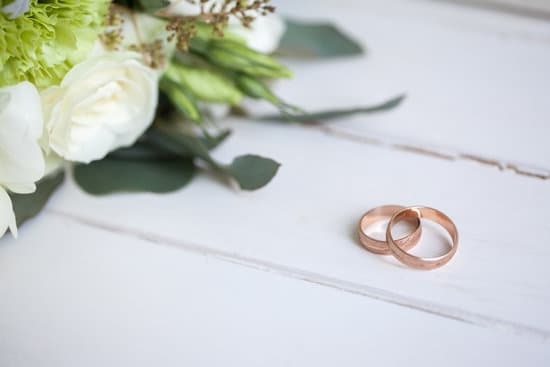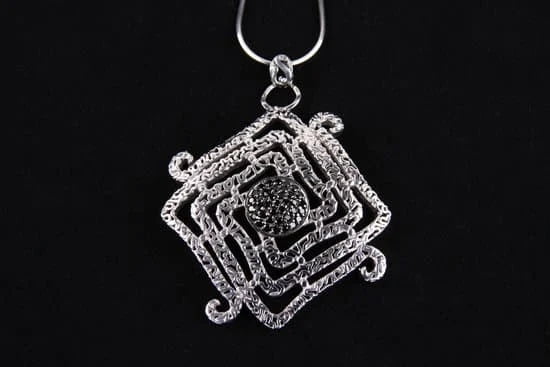Diamonds have long been regarded as the epitome of luxury and elegance, captivating individuals with their dazzling beauty and timeless allure. But is investing in diamond jewelry truly worth it? In this article, we will delve into the various aspects that make diamonds so desirable, from their symbolic meaning to their historical significance. We will also explore the factors to consider when evaluating diamond quality and ponder the cost of purchasing these precious gems.
Additionally, we will delve into the emotional value attached to diamonds as expressions of love and celebration, examine ethical considerations surrounding sourcing practices, and highlight why diamonds are considered a long-lasting investment. Finally, we will briefly touch upon alternative options for those seeking non-diamond jewelry choices. By weighing all these factors, we aim to provide readers with a comprehensive understanding of whether or not buying diamond jewelry is truly worthy.
Diamonds hold a special place in society due to their symbolism and perceived value. For centuries, they have been associated with love, commitment, wealth, and status. The allure lies not only in their physical properties but also in the emotions they represent. However, behind this symbolism lies a complex history that contributes to their timeless appeal. By understanding the historical significance of diamonds, we can gain insight into why they continue to enchant people across generations.
When contemplating the purchase of diamond jewelry, one must also consider its financial implications. Diamonds can be seen as both investments and expenditures depending on various factors such as market trends and personal preferences. By evaluating the cost versus benefit ratio, buyers can make informed decisions about whether investing in diamond jewelry aligns with their financial goals.
The Symbolic Meaning of Diamonds
Diamonds have long been associated with symbolizing love, commitment, and status. Their enduring allure can be attributed to a variety of factors, including their rarity, beauty, and cultural significance. In this section, we will explore the symbolic meaning of diamonds and delve into why they are so highly desired.
Love and Commitment
One of the main reasons diamonds are seen as desirable is because they have come to symbolize eternal love and commitment. The tradition of giving diamond engagement rings dates back centuries and has become deeply ingrained in many cultures. Diamonds are believed to represent endurance, purity, and strength in a relationship. They serve as a constant reminder of the love shared between partners and hold sentimental value that lasts a lifetime.
Status and Prestige
Beyond their symbolism in romantic relationships, diamonds are also associated with social status and prestige. Historically, diamonds were worn by royalty and aristocrats as a display of wealth and power. Today, owning diamond jewelry is still seen as a sign of success or affluence. People often purchase diamond pieces to showcase their achievements or to elevate their social standing.
Aesthetic Beauty
Another reason why diamonds are so desirable is simply because they are stunningly beautiful. With their brilliant sparkle and unique ability to reflect light, diamonds captivate the eye like no other gemstone. The clarity, cut, color, and carat weight all contribute to the overall beauty of a diamond piece. Whether set in an engagement ring or a pendant necklace, diamonds effortlessly enhance any outfit or occasion.
Historical Significance
The Ancient Origins of Diamonds
Diamonds have captivated humans for centuries, and their appeal can be traced back to ancient times. The earliest recorded evidence of diamond mining dates back to 4th century BC in India, where they were regarded as sacred and used for religious purposes.
It was during the Middle Ages that diamonds gained popularity among the European elite, signifying wealth and power. The fascination with diamonds continued to grow through the Renaissance period, as they were worn by nobility as a symbol of status and refinement.
Diamonds as Treasured Heirlooms
Throughout history, diamonds have been treasured as heirlooms passed down through generations. Many royal families and aristocrats possess magnificent diamond collections that are steeped in history and tradition. Perhaps one of the most famous historical diamonds is the Hope Diamond, a blue diamond with a long and mysterious past that has enticed people for centuries. These historical diamonds not only hold immense value but also serve as a tangible connection to the past, reinforcing the timeless appeal of diamonds.
Cultural Significance and Symbolism
Diamonds hold significant cultural symbolism across various societies and civilizations. In many cultures, diamonds represent purity, strength, and eternal love – making them a popular choice for engagement rings. Their clarity and brilliance are seen as qualities that reflect the wearer’s character or personality traits. Throughout history, diamonds have also been associated with divine powers and protection against negative energy or evil forces. These deep-rooted cultural beliefs contribute to the enduring allure of diamond jewelry.
The historical significance of diamonds plays a vital role in their timeless appeal. From their ancient origins to their cultural symbolism, diamonds have stood the test of time as a representation of beauty, wealth, love, and tradition. Understanding this historical context enhances our appreciation for these precious gemstones and helps us make an informed decision when considering whether it is worthy to buy diamond jewelry.
Evaluating Diamond Quality
When it comes to buying diamond jewelry, understanding the quality of diamonds is crucial. The 4Cs – cut, clarity, color, and carat weight – are the universally accepted standards for evaluating diamond quality. By familiarizing yourself with these criteria, you can make an informed decision and ensure that you are getting the best value for your money.
- Cut: The cut of a diamond refers to how well it has been crafted from its original rough form. It determines how effectively light is reflected and refracted within the diamond, giving it brilliance and sparkle. A well-cut diamond will have maximum light return and exhibit a beautiful play of light. The Gemological Institute of America (GIA) grades cut on a scale ranging from Excellent to Poor.
- Clarity: Clarity refers to the presence or absence of internal flaws (inclusions) and external blemishes on a diamond. These characteristics affect the overall appearance and rarity of the stone. The GIA grades clarity on a scale ranging from Flawless to Included (I). A higher clarity grade indicates fewer inclusions and blemishes, making the diamond more valuable.
- Color: Diamond color ranges from colorless to yellowish or brownish tones. The most valuable diamonds are those that are completely colorless, as they allow more light to pass through them. The GIA grades diamond color on a scale from D (colorless) to Z (light yellow or brown). It is essential to note that fancy colored diamonds, which come in various hues such as pink or blue, follow a separate grading system.
- Carat Weight: Carat weight refers to the size and thus also affects the perceived value of a diamond. One carat is equivalent to 200 milligrams, but smaller increments known as “points” are also used for weights less than one carat. It is important to understand that carat weight alone does not determine a diamond’s value; the other 3Cs play a significant role as well.
By understanding the 4Cs, you can evaluate diamond quality and ensure that you are making an informed decision when purchasing diamond jewelry. It is essential to keep in mind that each of the 4Cs affects diamond quality differently, and their importance varies depending on personal preferences and budget constraints.
Pondering the Cost
The purchase of diamond jewelry often raises the question of whether it is a worthwhile investment or simply an extravagant expenditure. In order to make an informed decision, it is important to consider the cost and the potential return on investment.
One of the factors that affects the cost of diamond jewelry is its quality, which is determined by what is commonly known as the “4Cs” – carat weight, color, clarity, and cut. These characteristics play a significant role in determining the value and price of a diamond.
When evaluating these factors, it is crucial to consider personal preferences as well as budget constraints. It’s important to note that while higher quality diamonds may come with a higher price tag initially, they also tend to hold their value better over time.
Another aspect to ponder is the emotional value associated with diamond jewelry. Diamonds have long been regarded as a symbol of love and celebration, making them popular choices for engagement rings and special occasions. The sentimental significance attached to such pieces can add an intangible value that goes beyond their monetary worth.
| Carat Weight | Color | Clarity | Cut | Average Price Range ($) |
|---|---|---|---|---|
| 1 carat | D | Flawless | Excellent | $10,000 – $20,000 |
| 1 carat | I | Slightly Included (SI2) | Good | $3,000 – $6,000 |
| 1 carat | M | Included (I1) | Fair | $1,500 – $3,000 |
It is also crucial to take ethical considerations into account when purchasing diamond jewelry. Nowadays, consumers are increasingly conscious about where their diamonds come from and the impact of their purchase. Ethical sourcing ensures that diamonds are mined and processed in a responsible manner, minimizing harm to both people and the environment. Prioritizing certification from organizations like the Kimberley Process Certification Scheme or looking for brands that engage in fair trade practices can help individuals make more socially responsible choices.
By evaluating the cost, emotional value, and ethical considerations associated with diamond jewelry, individuals can weigh the pros and cons before deciding whether it is worthy to buy diamond jewelry. Ultimately, the decision will vary depending on personal preferences, financial capabilities, and individual circumstances.
The Emotional Value
Diamonds have long been associated with love, romance, and celebration. They hold a special place in people’s hearts as a symbol of deep emotional connections and significant milestones. The emotional value attached to diamond jewelry is one of the main reasons why they continue to be coveted and cherished by many.
One of the most common ways diamonds are used to express love is through engagement rings. For centuries, diamonds have been the gemstone of choice for engagement rings due to their durability and sparkle. The tradition of giving a diamond engagement ring originated in the late 15th century when Archduke Maximilian of Austria gave a diamond ring to Mary of Burgundy. Since then, diamonds have been synonymous with love and commitment.
Not only are diamonds associated with love, but they are also often seen as a mark of celebration. Whether it’s an anniversary, birthday, or other special occasion, diamond jewelry is frequently given as a gift to commemorate these joyous moments. The brilliance and beauty of diamonds serve as a tangible representation of the happiness and excitement felt during these celebrations.
Ethical Considerations
In today’s society, ethical considerations have become increasingly important when it comes to purchasing any product, including diamond jewelry. People are becoming more conscious about the impact their choices have on the environment and on the lives of those involved in the production process. This has led to a rising demand for ethically sourced diamonds.
One key aspect of ethical sourcing is ensuring that the diamonds are conflict-free. Diamonds that are sourced from regions known for unethical practices, such as child labor or human rights abuses, can tarnish the beauty and prestige associated with these precious gems. As a result, various international initiatives have been put in place to regulate the diamond trade and prevent the circulation of blood diamonds.
To ensure ethical sourcing, consumers can look for certifications such as the Kimberley Process Certification Scheme (KPCS), which guarantees that diamonds have been mined and traded responsibly. Additionally, some jewelry brands go beyond these certifications by implementing rigorous standards throughout their entire supply chain. These standards may include commitments to fair wages and safe working conditions for miners, as well as environmentally sustainable mining practices.
When considering ethical sourcing, it is also important to consider sustainability. Diamond mining has historically had negative environmental impacts, including deforestation, soil erosion, and water contamination. However, there are companies that prioritize eco-friendly practices by implementing land rehabilitation programs or using renewable energy sources for mining operations.
In summary, ethical sourcing is an important factor to consider when buying diamond jewelry. By choosing ethically sourced diamonds, you not only contribute to supporting responsible practices but also ensure that your purchase aligns with your values. It gives peace of mind knowing that you are wearing a piece of jewelry that has been produced with respect for both people and the planet.
The Durability Factor
Diamonds have long been revered for their durability, making them a popular choice for those looking to make a long-lasting investment in jewelry. Unlike other gemstones or materials, diamonds are known to be one of the hardest substances on Earth, giving them exceptional resistance to wear and tear. This makes diamond jewelry an excellent choice for everyday wear, as it can withstand the rigors of daily life without losing its beauty or value.
One of the key factors that contribute to the durability of diamonds is their hardness. Diamonds are formed deep within the Earth’s mantle under intense pressure and heat, resulting in a crystal structure that is incredibly strong.
In fact, diamonds rank as a 10 on the Mohs scale of mineral hardness, which means they are virtually scratch-proof and resistant to chipping. This makes them ideal for use in jewelry such as engagement rings and wedding bands that are worn every day.
Furthermore, diamonds have exceptional chemical and thermal stability, meaning that they are not easily affected by exposure to common household chemicals or changes in temperature. This makes diamond jewelry highly resistant to damage from daily activities such as cleaning or cooking, where other gemstones may be more vulnerable. Additionally, diamonds have good optical properties that allow them to retain their sparkle and brilliance over time.
Due to their durability, diamond jewelry has become a popular choice for heirlooms and family treasures. Many people choose to invest in diamond pieces with the intention of passing them down through generations as a symbol of love and history. Diamond jewelry holds sentimental value beyond its monetary worth because it can withstand the test of time and serve as a constant reminder of cherished memories.
Alternative Options
While diamond jewelry may be considered a classic choice, there are plenty of alternative options available for those seeking something different. From gemstones to alternative materials, the world of non-diamond jewelry offers a wide range of choices that can cater to various styles and preferences.
One popular alternative to traditional diamond jewelry is colored gemstones. Gemstones such as sapphires, emeralds, and rubies are not only visually stunning but also come in a variety of vibrant colors. These gemstones can add a unique touch to any piece of jewelry and can be just as significant and meaningful as diamonds. Some individuals may even prefer the idea of wearing their birthstone or a gemstone that holds personal significance.
In addition to gemstones, another option for those looking for non-diamond jewelry is selecting pieces made from alternative materials. For example, pearls have long been associated with elegance and grace, making them a popular choice among many. Pearls come in various sizes, shapes, and colors, offering versatility in design options. Additionally, other materials such as gold, silver, and platinum can be used to create stunning pieces that stand out without the need for diamonds.
When exploring alternative options for non-diamond jewelry choices, it is important to consider personal style and preference. The beauty of non-diamond options lies in the ability to find unique pieces that truly reflect one’s individuality. Whether it’s a bold statement piece or delicate everyday wear, the world of non-diamond jewelry has something to offer everyone who seeks an alternative to traditional diamond jewelry.
Conclusion
In conclusion, the decision of whether or not to buy diamond jewelry ultimately comes down to personal preferences and circumstances. There are certainly many pros to consider when contemplating a purchase. First and foremost, diamonds have always been associated with allure and prestige, making them highly desirable. The symbolic meaning behind diamonds also adds significant value, as they are often seen as a symbol of love and celebration.
Additionally, the historical significance of diamonds cannot be overlooked. They have stood the test of time and continue to captivate people’s imaginations. Furthermore, diamond quality can be evaluated using the 4Cs method, which helps customers make informed choices about their purchases.
However, it is crucial to carefully consider the cons as well. One aspect that potential buyers need to ponder is the cost of diamond jewelry. While some may view it as a worthwhile investment, others might see it as an extravagant expenditure. It is essential to weigh one’s financial situation before making a decision.
Ethical considerations should also play a role in the buying process. Ensuring that the diamonds are ethically sourced supports sustainable practices and protects against harmful environmental impacts.
Lastly, alternative options exist for those who want unique and non-traditional jewelry choices. Exploring these options can open up new possibilities for self-expression and can truly set one apart from others.
Ultimately, each individual must carefully consider all these factors before deciding if diamond jewelry is worthy of purchase. By weighing the pros and cons outlined in this article, individuals can make an informed decision that aligns with their values, preferences, and financial circumstances.
Frequently Asked Questions
Is diamond jewelry a good investment?
Diamond jewelry can be considered a good investment under specific circumstances, but it is generally not a traditional or reliable investment vehicle. Unlike some other forms of investments like stocks or real estate, the value of diamonds does not typically appreciate over time at the same rate. The market for diamond jewelry can also be subject to fluctuations due to factors such as changing consumer preferences and economic conditions.
Additionally, there are various costs associated with owning and maintaining diamond jewelry, including insurance, storage, and potential risks of damage or loss. Overall, while diamond jewelry may hold sentimental value and serve as a luxury item, it is generally advisable to diversify one’s investment portfolio through other more stable assets.
What are the disadvantages of buying diamonds?
Buying diamonds comes with certain disadvantages that should be considered before making a purchase. One significant disadvantage is the high price associated with diamonds. As a result, buying diamond jewelry can be quite expensive compared to other options in the market. Additionally, the process of valuing diamonds can be complex and subjective as factors such as cut, clarity, carat weight, and color influence their overall worth.
This makes it challenging for buyers to determine if they are getting a fair deal or not without proper knowledge or professional assistance. Lastly, the resale market for secondhand diamonds is relatively limited compared to other commodities. Therefore, if one intends to sell a diamond piece in the future for its monetary value instead of sentimental reasons, finding interested buyers at an acceptable price may prove difficult.
Is it better to invest in gold or diamond?
When considering whether it’s better to invest in gold or diamonds, several factors should be taken into account determined by individual preferences and financial goals. Gold has historically been seen as a more stable investment than diamonds due to its long-standing status as a store of value throughout history and its ability to serve as protection against inflation during uncertain economic times.
It is actively traded on global markets and often used in diversified portfolios for risk management purposes.

Welcome to my jewelry blog! My name is Sarah and I am the owner of this blog.
I love making jewelry and sharing my creations with others.
So whether you’re someone who loves wearing jewelry yourself or simply enjoys learning about it, be sure to check out my blog for insightful posts on everything related to this exciting topic!





